
Paphos Forest: Nature's Hidden Gem in Cyprus
Discover the natural beauty and rich biodiversity of Paphos Forest, a serene and captivating retreat in Cyprus's heartland, perfect for nature lovers and adventure seekers.
Nestled in the heart of Cyprus, Paphos Forest is a lush and verdant haven that offers a striking contrast to the island's sun-kissed beaches. This expansive forest covers an area of approximately 600 square kilometers and is home to a diverse range of flora and fauna, making it a perfect retreat for nature lovers and adventurers alike. Towering pine trees, fragrant cedar groves, and vibrant wildflowers paint a picturesque landscape that changes with the seasons, ensuring that each visit is unique. One of the forest's most remarkable residents is the Cyprus mouflon, a rare and protected wild sheep that roams freely through the dense undergrowth. Birdwatchers will be delighted by the sight of various bird species, including the majestic Bonelli's eagle and the colorful European roller. The forest also harbors ancient ruins and Byzantine monasteries, providing a glimpse into Cyprus's rich history and cultural heritage. Exploring Paphos Forest is an adventure in itself. Numerous trails and paths wind their way through the forest, catering to hikers of all levels. The Cedar Valley trail is particularly popular, offering stunning views and a chance to see the endemic Cyprus cedar. For those seeking a more leisurely experience, picnic areas and scenic viewpoints are scattered throughout the forest, providing peaceful spots to relax and take in the natural beauty. Whether you're an avid hiker, a history enthusiast, or simply looking to escape the hustle and bustle, Paphos Forest offers a serene and captivating experience that will leave you feeling rejuvenated.
Local tips in Paphos Forest
- Wear sturdy hiking shoes, as some trails can be rugged and uneven.
- Visit the Cedar Valley in spring or autumn for the best weather and most vibrant scenery.
- Carry sufficient water and snacks, as there are limited facilities within the forest.
- Keep an eye out for the Cyprus mouflon, especially during early mornings or late afternoons.
- Respect the natural environment and follow designated trails to preserve the forest's beauty.
Paphos Forest: Nature's Hidden Gem in Cyprus
Nestled in the heart of Cyprus, Paphos Forest is a lush and verdant haven that offers a striking contrast to the island's sun-kissed beaches. This expansive forest covers an area of approximately 600 square kilometers and is home to a diverse range of flora and fauna, making it a perfect retreat for nature lovers and adventurers alike. Towering pine trees, fragrant cedar groves, and vibrant wildflowers paint a picturesque landscape that changes with the seasons, ensuring that each visit is unique. One of the forest's most remarkable residents is the Cyprus mouflon, a rare and protected wild sheep that roams freely through the dense undergrowth. Birdwatchers will be delighted by the sight of various bird species, including the majestic Bonelli's eagle and the colorful European roller. The forest also harbors ancient ruins and Byzantine monasteries, providing a glimpse into Cyprus's rich history and cultural heritage. Exploring Paphos Forest is an adventure in itself. Numerous trails and paths wind their way through the forest, catering to hikers of all levels. The Cedar Valley trail is particularly popular, offering stunning views and a chance to see the endemic Cyprus cedar. For those seeking a more leisurely experience, picnic areas and scenic viewpoints are scattered throughout the forest, providing peaceful spots to relax and take in the natural beauty. Whether you're an avid hiker, a history enthusiast, or simply looking to escape the hustle and bustle, Paphos Forest offers a serene and captivating experience that will leave you feeling rejuvenated.
When is the best time to go to Paphos Forest?
Iconic landmarks you can’t miss
Petra tou Romiou (Aphrodite's Rock)
Explore Aphrodite's Rock in Cyprus - A Historical Landmark of Myth and Natural Beauty, Perfect for Nature Lovers and History Buffs Alike.
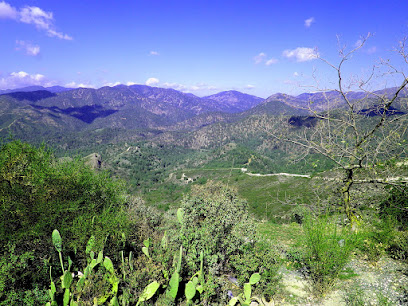
Archaeological Site of Nea Paphos
Discover the ancient treasures of Nea Paphos, a UNESCO World Heritage site showcasing stunning mosaics and rich archaeological history in Cyprus.
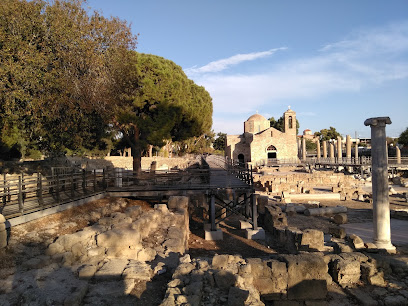
Archaeological Site of the Tombs of the Kings
Discover the ancient burial practices of Cyprus at the UNESCO-listed Tombs of the Kings, featuring breathtaking architecture and serene coastal views.
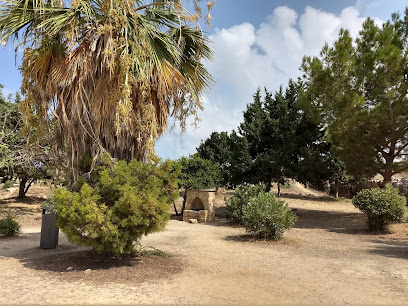
Cape Cavo Greco
Immerse yourself in the natural wonders of Cape Cavo Greco, a breathtaking nature preserve in Ayia Napa, Cyprus, perfect for adventure and relaxation.
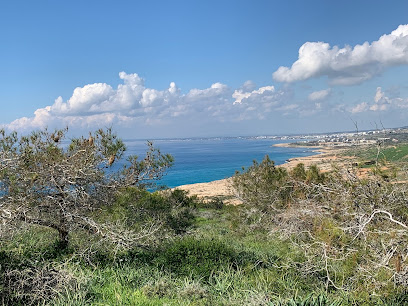
Adonis Baths Waterfalls
Experience the enchanting Adonis Baths Waterfalls, a natural paradise in Cyprus, perfect for relaxation, adventure, and stunning views.
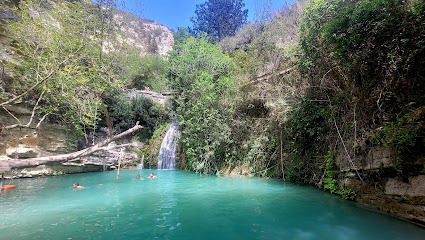
Paphos Aphrodite Waterpark
Experience the ultimate fun at Paphos Aphrodite Waterpark, a top-rated destination for thrill-seekers and families in the heart of Cyprus!
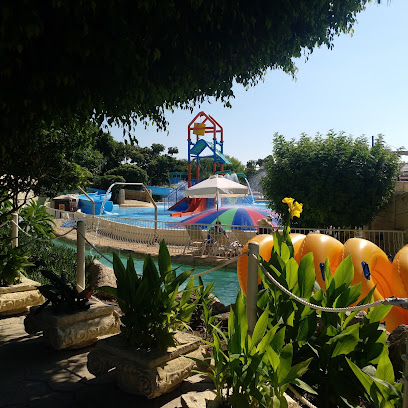
Paphos Castle
Explore the captivating history and stunning views at Paphos Castle, a must-see landmark on the beautiful shores of Cyprus.

Avakas Gorge Nature Trail
Discover the breathtaking beauty of Avakas Gorge Nature Trail, an essential hiking destination in Cyprus that offers stunning landscapes and diverse wildlife.
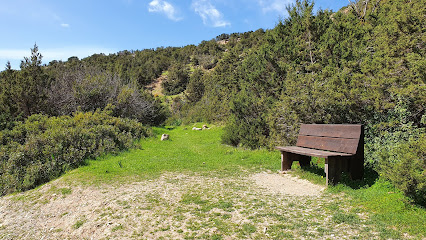
Kolossi Castle
Explore the rich history and stunning architecture of Kolossi Castle, a must-visit medieval landmark in Cyprus.

Baths of Aphrodite
Explore the mythical Baths of Aphrodite, a historical landmark on Cyprus's stunning coast, where nature's beauty meets ancient legends.
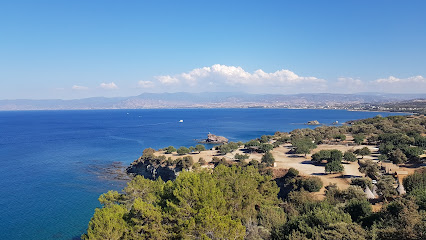
Paphos Market
Immerse yourself in the vibrant atmosphere of Paphos Market, where local culture, delicious street food, and unique crafts come together.
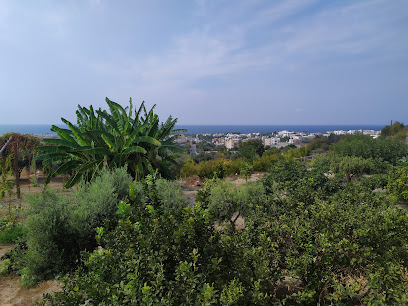
Cyprus
Explore the stunning beaches, rich history, and vibrant culture of Cyprus, a Mediterranean island paradise for every type of traveler.
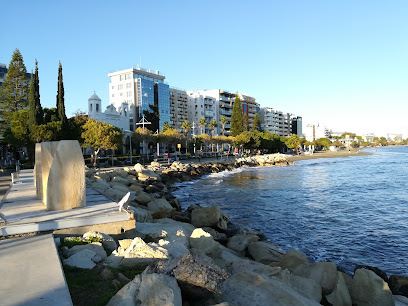
Caledonian Waterfall
Explore the breathtaking Caledonian Waterfall in Pano Platres, a natural gem of Cyprus surrounded by lush pine forests and scenic hiking trails.
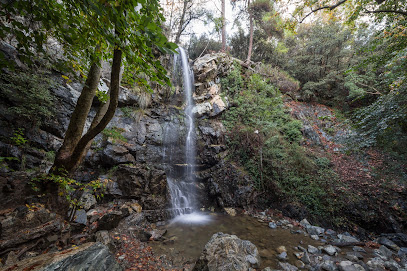
Akamas National Forest Park
Explore Akamas National Forest Park, a natural wonderland in Cyprus filled with stunning landscapes, rich biodiversity, and endless adventure opportunities.
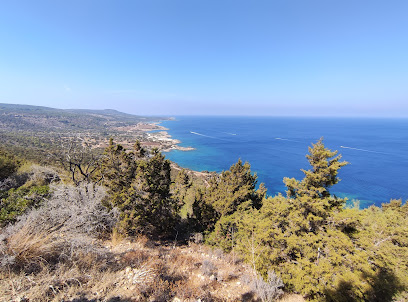
Millomeris Waterfall Trail
Experience the breathtaking beauty of Millomeris Waterfall Trail in Cyprus, a lush hiking paradise for nature lovers and adventure seekers.
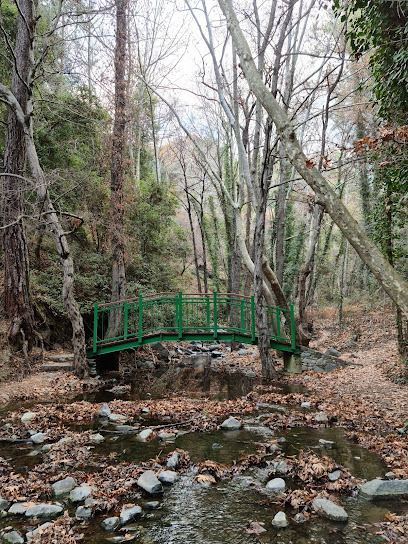
Unmissable attractions to see
Υδροπάρκο Φασουρίου Watermania
Experience the ultimate water adventure at Fasouri Watermania, Cyprus's largest water park with thrilling rides and family-friendly fun.
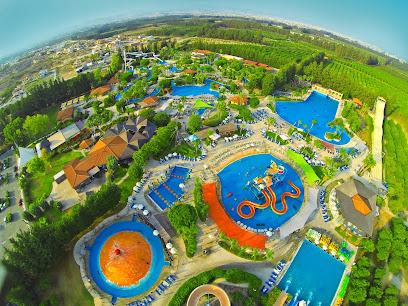
Troodos Botanical Garden
Explore the breathtaking Troodos Botanical Garden, a serene haven in the heart of Cyprus celebrating the beauty of local flora and nature.
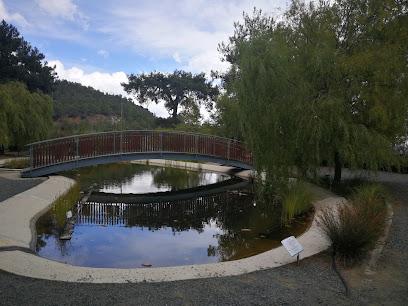
Platania
Experience the natural beauty and tranquility of Platania, a captivating national reserve in Cyprus, perfect for nature lovers and outdoor adventures.
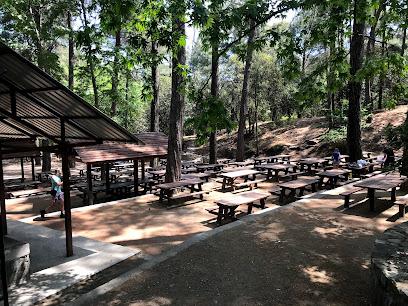
Platres Chocolate Workshop
Discover the sweet side of Cyprus at Platres Chocolate Workshop, where artisanal chocolates and hands-on experiences await every visitor.

Zambartas Wineries
Explore the rich flavors and breathtaking views at Zambartas Wineries in Agios Amvrosios, Cyprus – a true gem for wine enthusiasts.

Monastery of the Virgin Mary of Arakas
Explore the Monastery of the Virgin Mary of Arakas, a serene gem in Lagoudera, Cyprus, showcasing stunning Byzantine architecture and rich cultural heritage.
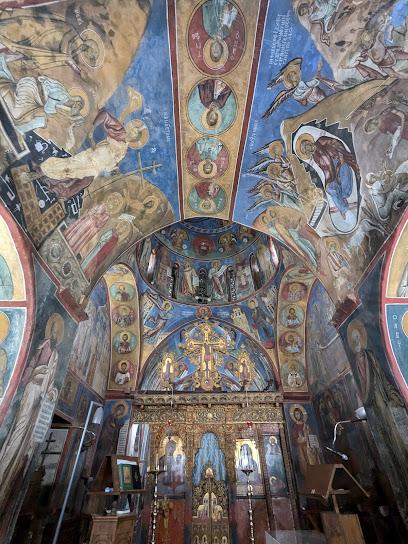
The Place
Explore the vibrant arts and crafts at The Place in Paphos, Cyprus – a cultural center where unique souvenirs come to life.
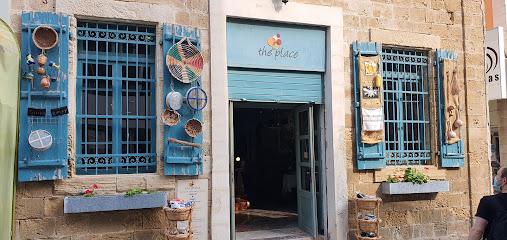
Smigies Nature Trail
Explore the stunning Smigies Nature Trail in Cyprus, a nature lover's paradise offering breathtaking views and serene landscapes for all adventurers.

Mesa Potamos (Argolachania) Picnic Site
Discover Mesa Potamos in Moniatis, Cyprus – the ultimate picnic spot nestled in nature's embrace, perfect for outdoor gatherings and relaxation.
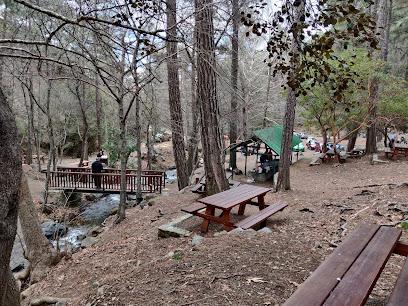
Panagia Amirous Monastery
Experience the serene beauty and spiritual heritage of Panagia Amirous Monastery in Mathikoloni, Cyprus, a peaceful retreat for travelers.
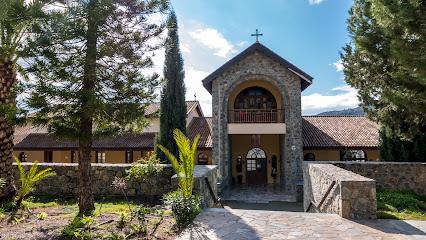
Local Archaeological Museum of Kourion
Explore the Local Archaeological Museum of Kourion and immerse yourself in the ancient history and culture of Cyprus.
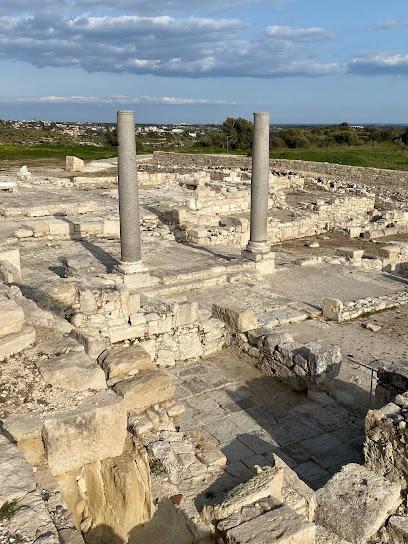
Kolios winery
Experience the exquisite flavors of Cyprus at Kolios Winery, where tradition meets modern winemaking in a stunning vineyard setting.
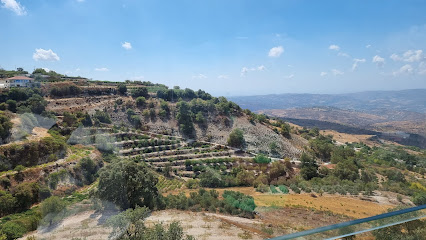
Oreites Forest
Discover the serene beauty of Oreites Forest in Kouklia, Cyprus, a perfect destination for nature lovers and outdoor enthusiasts seeking adventure and tranquility.
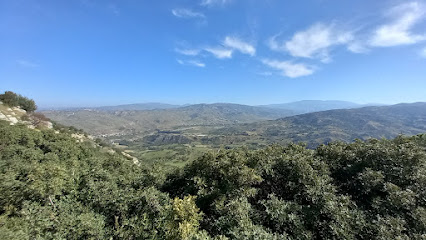
Makarios statue
Explore the Makarios statue in Cyprus, a monumental tribute to the first President that reflects the island's rich history and cultural significance.
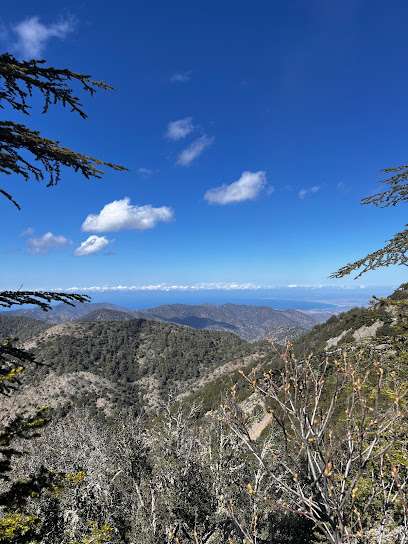
En Plo, Gallery
Explore contemporary art at En Plo Gallery, a cultural gem in Paphos, Cyprus, showcasing local and international talents amidst stunning coastal views.
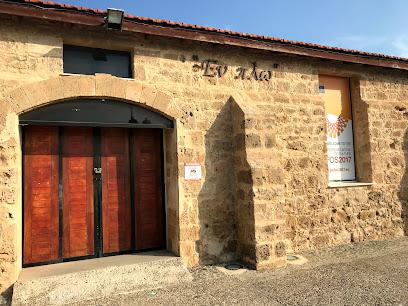
Essential places to dine
Ocean Basket Paphos
Discover Ocean Basket Paphos: A seafood restaurant where freshness meets flavor in a vibrant coastal setting.
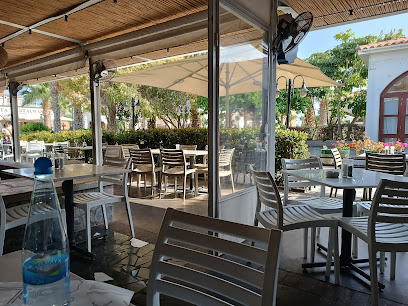
Muse
Experience exquisite dining at Muse in Paphos, where breathtaking views meet culinary excellence for an unforgettable meal.
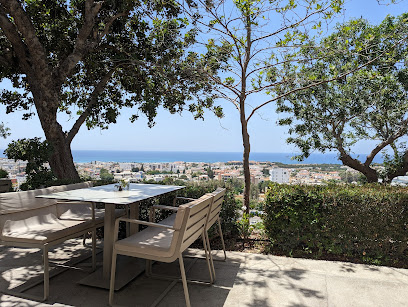
Pelican Restaurant
Experience exquisite seafood dining at Pelican Restaurant in Paphos Harbour with stunning views and delightful local flavors.
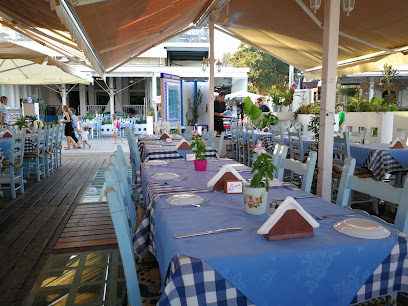
Omikron Brunch
Savor the unique flavors of Cyprus at Omikron Brunch - your go-to spot for innovative breakfast and brunch dishes.
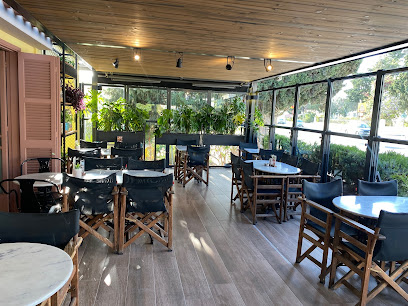
Melania Restaurant, Paphos, Cyprus
Discover Melania Restaurant in Paphos: A gem serving exquisite Greek cuisine amidst stunning views and warm hospitality.
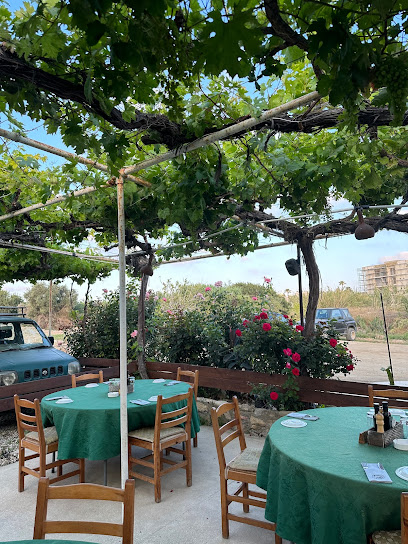
CHRISTOS Grill and Seafood
Experience exquisite flavors at Christos Grill and Seafood in Paphos – where Mediterranean cuisine meets exceptional hospitality.

Riganato - Greek Grill Restaurant - Delivery & Takeaway
Experience authentic Greek cuisine at Riganato in Paphos – where every dish tells a story of Mediterranean tradition and flavor.
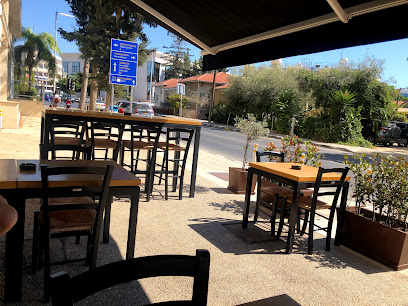
Sail At Castle
Experience exceptional Modern European dining at Sail At Castle in Paphos Harbour—where flavor meets stunning seaside views.

Laona Restaurant
Discover the flavors of Cyprus at Laona Restaurant in Votsi—where tradition meets taste in every dish.
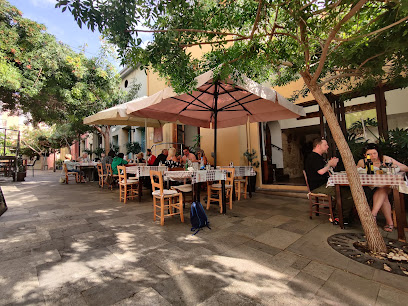
Koutourou Ouzeri
Experience authentic Cypriot cuisine at Koutourou Ouzeri in Paphos, where tradition meets taste in a warm and inviting atmosphere.
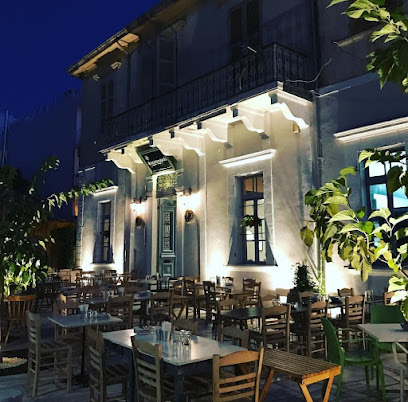
Bacchus Restaurant Cafe
Experience authentic Mediterranean flavors at Bacchus Restaurant Cafe in Paphos - a perfect blend of taste and ambiance.
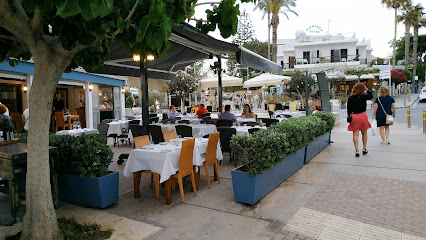
Ficardo Restaurant
Experience exquisite continental cuisine at Ficardo Restaurant in Paphos – where every meal is a celebration of flavor and culture.
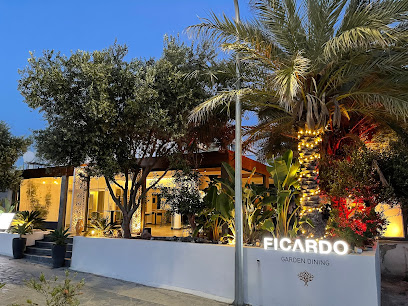
Georgia Meze House Restaurant
Experience authentic Greek and Georgian cuisine at Georgia Meze House Restaurant in Paphos - where every meal is a celebration of flavor.
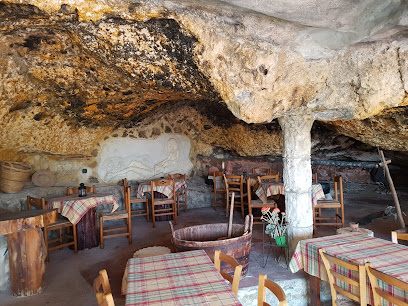
Michael's House
Savor authentic Greek flavors at Michael's House in Paphos – a culinary gem offering delightful dishes and warm hospitality.
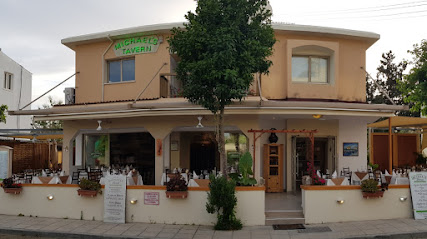
Piedra All Day Cafe Lounge Bar.
Discover a culinary gem in Cyprus at Piedra All Day Cafe Lounge Bar – where flavor meets relaxation.

Markets, malls and hidden boutiques
Kings Avenue Mall
Discover a shopping haven at Kings Avenue Mall, featuring diverse shops, delicious dining, and exciting entertainment in Paphos, Cyprus.

Jumbo
Discover Jumbo in Paphos, a vibrant supermarket and shopping mall offering a diverse range of products for every need in a welcoming atmosphere.

Paphos Forest
Explore the breathtaking Paphos Forest, a serene nature preserve in Cyprus filled with lush greenery and diverse wildlife, perfect for adventurous tourists.
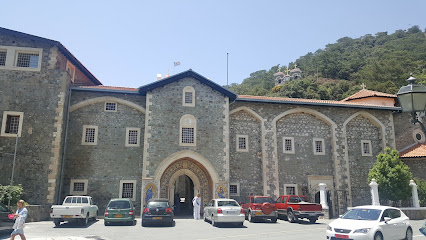
The Place
Explore The Place in Paphos for unique gifts, local crafts, and a taste of Cypriot culture, all in a vibrant and welcoming atmosphere.
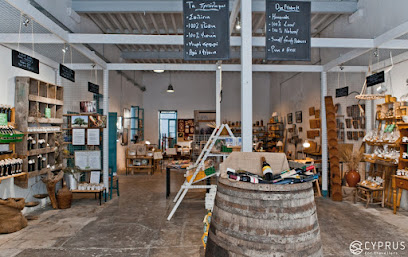
Crystal Shop Cyprus
Explore the magical Crystal Shop Cyprus for unique gifts, crystals, and aromatherapy supplies in the heart of Paphos, perfect for all spiritual seekers.
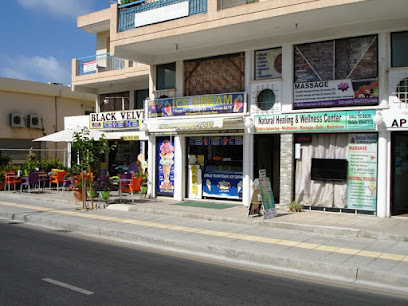
Dominate Shopping Centre
Discover a vibrant shopping experience at Dominate Shopping Centre in Paphos, Cyprus, featuring fashion, dining, and local culture.

Spontas Souvenirs and Gifts
Explore Spontas Souvenirs and Gifts in Paphos for unique local crafts, cosmetics, and gifts that capture the essence of Cyprus.

Neldi Art Gallery
Explore Neldi Art Gallery in Paphos for unique gifts and exquisite handicrafts that embody the spirit of Cyprus.
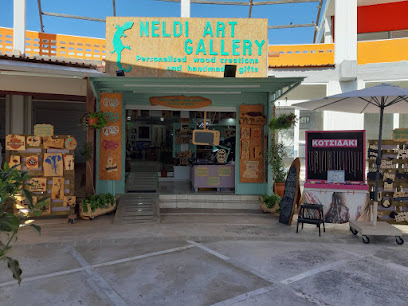
The Euro Shop - Paphos
Explore unbeatable deals and delightful finds at The Euro Shop in Paphos, where quality meets affordability for savvy travelers.
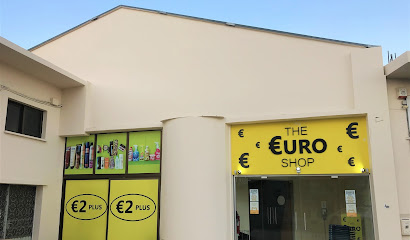
Lepus Gift Shop - Kings Avenue Mall
Discover unique gifts, stylish handbags, and exquisite jewelry at Lepus Gift Shop in Kings Avenue Mall, Paphos, Cyprus.

C&S Polyviou Souvenir shop
Discover authentic Cypriot souvenirs at C&S Polyviou, where local crafts and delicacies await to enrich your travel memories.
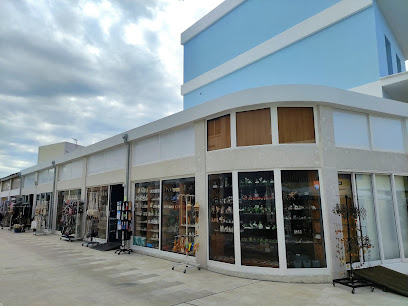
Cosmos Gallery.
Explore Cosmos Gallery in Paphos for unique local art and handcrafted gifts, reflecting the vibrant culture of Cyprus.

Sea View Souvenir & Gift Shop.
Explore the vibrant Sea View Souvenir & Gift Shop in Paphos, offering unique gifts, beauty products, and local crafts for every traveler.
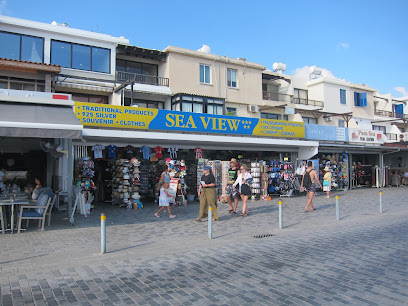
Pumpkin House
Explore unique home goods and local artistry at the Pumpkin House in Cyprus, a treasure trove of creativity and charm.

Y.M. STOA Souvenir Shop
Explore the heart of Paphos at Y.M. STOA Souvenir Shop, where unique Cypriot treasures await every traveler.

Essential bars & hidden hideouts
Sea You Beach Bar
Experience the vibrant atmosphere and stunning views at Sea You Beach Bar, your perfect beachside retreat in Kissonerga, Cyprus.
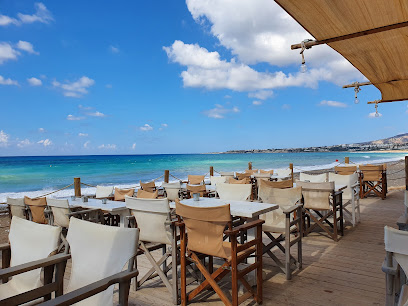
O'Neill's Irish Bar and Grill
Discover the lively O'Neill's Irish Bar and Grill in Paphos, where traditional Irish flavors and warm hospitality create an unforgettable dining experience.
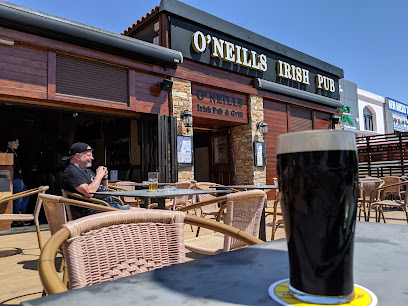
Alea Allday Lifestyle
Discover Alea Allday Lifestyle in Paphos: A must-visit cocktail bar where exquisite drinks meet vibrant nightlife in a stunning Mediterranean setting.
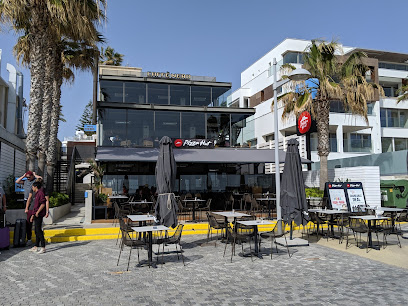
The Wooden Pub
Experience the vibrant atmosphere and local flavors at The Wooden Pub in Paphos, where great drinks and friendly faces await.
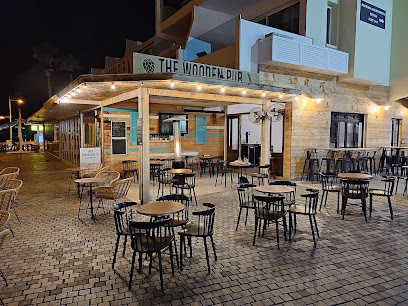
Friends Resto Bar
Discover the vibrant atmosphere and delicious offerings at Friends Resto Bar in Paphos, Cyprus, where culinary delights meet lively entertainment.
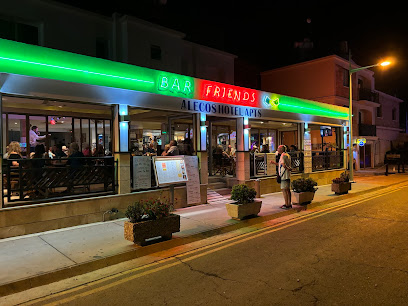
Crocodile Pub
Experience the thrill of live sports in a vibrant atmosphere at Crocodile Pub, Paphos' premier sports bar with delicious food and drinks.

Flintstones
Discover the liveliness of Flintstones Bar in Paphos, where friendly service meets a vibrant atmosphere perfect for nightlife lovers.

Why Not?
Experience the vibrant nightlife of Paphos at 'Why Not?', a charming bar offering a delightful selection of drinks and a welcoming atmosphere.
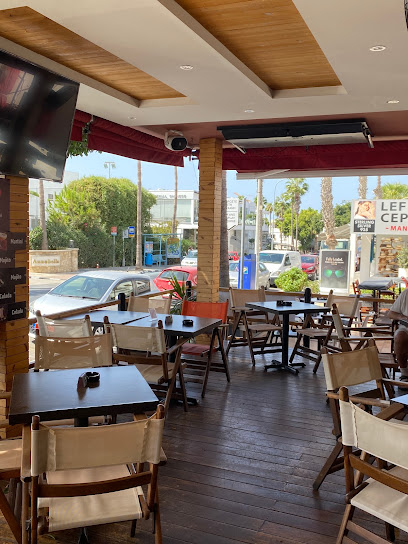
Boulevard Bistro Wine Bar
Discover Boulevard Bistro Wine Bar in Paphos – a perfect blend of fine wine, delicious food, and live music, creating unforgettable dining experiences.
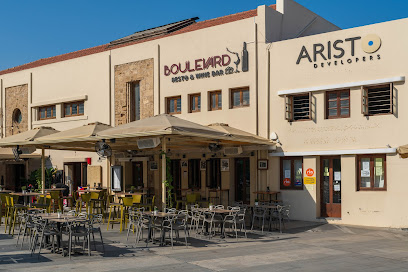
Piedra All Day Cafe Lounge Bar.
Experience the vibrant culinary scene at Piedra All Day Cafe Lounge Bar in Cyprus, where delicious meals and creative cocktails await.
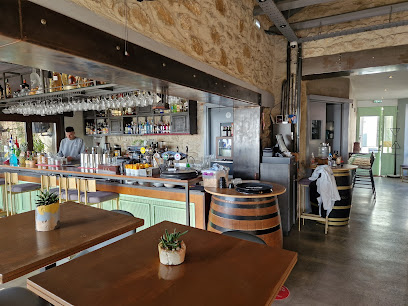
Rum and Jam
Discover the vibrant culinary scene at Rum and Jam, where expertly crafted cocktails, delicious brunch, and cozy ambiance await in Paphos, Cyprus.
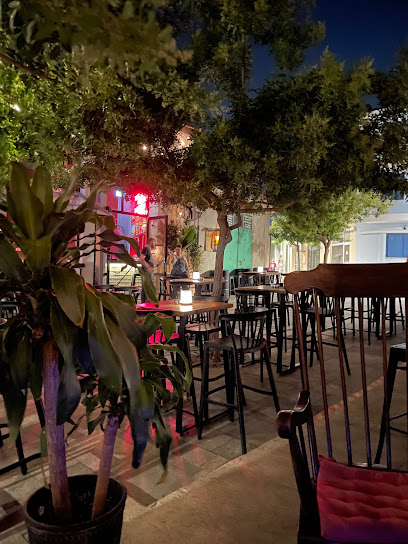
Kalua - Cocktails & Meze/Tapas Bar
Kalua in Yeroskipou, Cyprus: A lively bar offering exquisite cocktails and mouthwatering tapas, just steps from the beach.
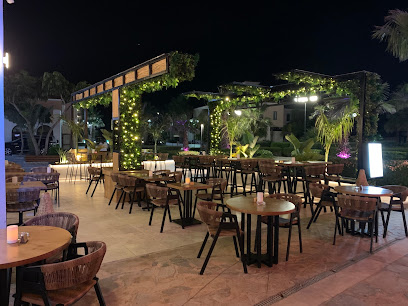
Chernobyl Bar
Discover the unique ambiance and exceptional cocktails at Chernobyl Bar in Paphos, Cyprus – a must-visit for adventurous travelers.
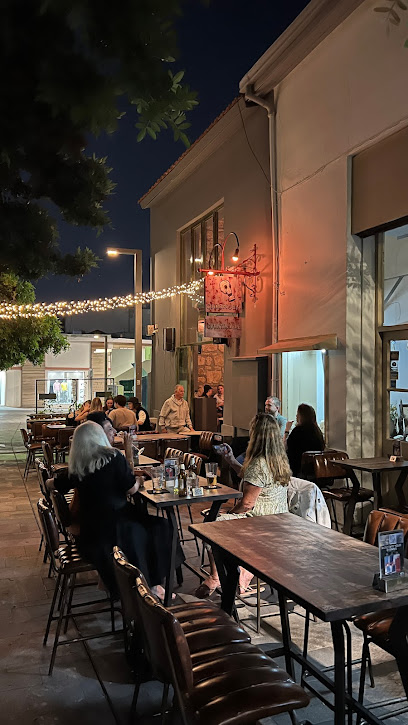
Different Bar
Experience the vibrant nightlife at Different Bar in Paphos, Cyprus – a welcoming gay bar with great cocktails and a lively atmosphere.

The Bottle Bank Pub Cafe
Experience the vibrant nightlife at The Bottle Bank Pub Cafe in Paphos, where local flavors meet a lively atmosphere for an unforgettable evening.
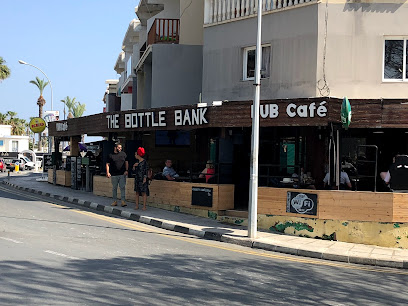
Local Phrases about Paphos Forest
-
- HelloΓεια σας
[Ya sas] - GoodbyeΑντίο
[Adio] - YesΝαι
[Ne] - NoΌχι
[Ochi] - Please/You're welcomeΠαρακαλώ
[Parakalo] - Thank youΕυχαριστώ
[Efharisto] - Excuse me/SorryΣυγνώμη
[Signomi] - How are you?Πώς είστε;
[Pos iste?] - Fine. And you?Καλά. Εσείς;
[Kala. Esis?] - Do you speak English?Μιλάτε αγγλικά;
[Milate anglika?] - I don't understandΔεν καταλαβαίνω
[Den katalaveno]
- HelloΓεια σας
-
- I'd like to see the menu, pleaseΘα ήθελα να δω το μενού, παρακαλώ
[Tha ithela na do to menu, parakalo] - I don't eat meatΔεν τρώω κρέας
[Den troo kreas] - Cheers!ΥΓΕΙΑ!
[Yia] - I would like to pay, pleaseΘα ήθελα να πληρώσω, παρακαλώ
[Tha ithela na plirosso, parakalo]
- I'd like to see the menu, pleaseΘα ήθελα να δω το μενού, παρακαλώ
-
- Help!Βοήθεια!
[Voithia!] - Go away!Πήγαινε!
[Pigene!] - Call the Police!Καλέστε την αστυνομία!
[Kaleste tin astinomia!] - Call a doctor!Καλέστε έναν γιατρό!
[Kaleste enan yatro!] - I'm lostΈχω χαθεί
[Eho hathi] - I'm illΕίμαι άρρωστος
[Emai arrostos]
- Help!Βοήθεια!
-
- I'd like to buy...Θα ήθελα να αγοράσω...
[Tha ithela na agoraso] - I'm just lookingΑπλά κοιτάω
[Apla kitao] - How much is it?Πόσο κοστίζει;
[Poso kostizi?] - That's too expensiveΑυτό είναι πολύ ακριβό
[Afto ine poli akribo] - Can you lower the price?Μπορείτε να μειώσετε την τιμή;
[Borite na miosete tin timi?]
- I'd like to buy...Θα ήθελα να αγοράσω...
-
- What time is it?Τι ώρα είναι;
[Ti ora ine?] - It's one o'clockΕίναι μία η ώρα
[Ine mia i ora] - Half past (10)Μισή (10)
[Misi (deka)] - MorningΠρωί
[Proi] - AfternoonΑπόγευμα
[Apoyevma] - EveningΒράδυ
[Vradi] - YesterdayΧθες
[Hthes] - TodayΣήμερα
[Simera] - TomorrowΑύριο
[Avrio] - 1Ένα
[Ena] - 2Δύο
[Dio] - 3Τρία
[Tria] - 4Τέσσερα
[Tessera] - 5Πέντε
[Pente] - 6Έξι
[Exi] - 7Εφτά
[Efta] - 8Οχτώ
[Ochto] - 9Εννέα
[Ennea] - 10Δέκα
[Deka]
- What time is it?Τι ώρα είναι;
-
- Where's a/the...?Πού είναι ένα/το...;
[Pou ine ena/to...?] - What's the address?Ποια είναι η διεύθυνση;
[Pia ine i diefthinsi?] - Can you show me (on the map)?Μπορείτε να μου δείξετε (στο χάρτη);
[Borite na mou deksete (sto hartí)?] - When's the next (bus)?Πότε είναι το επόμενο (λεωφορείο);
[Pote ine to epomeno (leoforeio)?] - A ticket (to ....)Ένα εισιτήριο (για το...);
[Ena isitirio (ya to...)?]
- Where's a/the...?Πού είναι ένα/το...;
History of Paphos Forest
-
Paphos Forest is steeped in the lore of ancient Greek mythology. The forest is said to have been a sacred place dedicated to the goddess Aphrodite, who was born out of the sea foam near Paphos. Archaeological evidence suggests that the area was inhabited by ancient civilizations that revered the forest as a sacred natural sanctuary, using it for religious rituals and ceremonies.
-
During the medieval period, Paphos Forest became a strategic location for fortifications under the Lusignan Dynasty. The Lusignans, who ruled Cyprus in the 13th and 14th centuries, built a series of watchtowers and fortresses within the forest to protect against invasions. These fortifications served as key defensive structures and contributed to the island's complex medieval history.
-
The Ottoman Empire, which ruled Cyprus from 1571 to 1878, implemented systematic forest management practices in Paphos Forest. The Ottomans recognized the ecological and economic importance of the forest, enacting laws to prevent over-exploitation of its resources. This period saw the introduction of sustainable forestry techniques that aimed to preserve the forest's integrity.
-
Under British colonial rule from 1878 to 1960, Paphos Forest underwent significant conservation efforts. The British administration established forest reserves and implemented policies to protect the diverse flora and fauna. This era marked the beginning of modern forestry practices in Cyprus, with the introduction of scientific methods for forest conservation and management.
-
In contemporary times, Paphos Forest is recognized as a critical biodiversity hotspot and a vital part of Cyprus's natural heritage. It is home to several endemic species, including the Cyprus mouflon and the Cyprus cedar. The forest's cultural and historical significance, along with its ecological value, has led to its inclusion in the UNESCO World Heritage list, ensuring its protection for future generations.
Paphos Forest Essentials
-
Paphos Forest is located in the western part of Cyprus. The nearest international airport is Paphos International Airport, approximately 50 kilometers away. From the airport, you can rent a car, take a taxi, or use public transport to reach the forest. The journey by car typically takes around 1 hour. There are also bus services that operate from Paphos city center to nearby villages such as Lysos and Panagia, which provide access to the forest.
-
The best way to explore Paphos Forest is by car. Renting a car offers the flexibility to visit various points of interest at your own pace. Ensure that your vehicle is suitable for mountainous terrain, as some roads can be rough and narrow. Public buses are available but have limited routes and schedules. Taxis can be hired for specific trips, but it is advisable to negotiate the fare beforehand. Cycling and hiking are also popular ways to explore the forest, with numerous trails available.
-
The official currency in Cyprus is the Euro (EUR). Credit and debit cards are widely accepted in hotels, restaurants, and shops around the Paphos area. However, it is recommended to carry some cash, especially when visiting remote areas within the forest where card facilities may not be available. ATMs can be found in nearby villages and towns, but it is wise to withdraw sufficient cash before venturing deep into the forest.
-
Paphos Forest is generally a safe destination for tourists. However, it is important to take standard precautions. There are no specific high-crime areas targeting tourists within the forest, but be cautious of wildlife and ensure you have adequate supplies if hiking or camping. Avoid leaving valuables in your vehicle and be cautious when driving on narrow mountain roads. Always inform someone of your itinerary if you plan to go on long hikes.
-
In case of an emergency, dial 112 for immediate assistance. The nearest hospital is located in Paphos city. For minor injuries or health issues, there are medical clinics in nearby villages. Ensure you have travel insurance that covers medical emergencies and outdoor activities. It is also recommended to carry a basic first aid kit when exploring the forest. Local rangers and forest officials can also provide assistance if needed.
-
Fashion: Do wear comfortable and durable clothing suitable for hiking and outdoor activities. Avoid wearing sandals or open-toed shoes. Religion: Do respect local religious customs if visiting nearby villages. Some areas may have religious sites where modest dress is required. Public Transport: Do be patient with public transport schedules as they can be infrequent. Don't rely solely on public transport for forest exploration. Greetings: Do greet locals with a friendly 'Yia sou' (Hello). A handshake is common. Eating & Drinking: Do try local Cypriot delicacies and enjoy meals in village tavernas. Don't waste food, as it is considered impolite.
-
To experience Paphos Forest like a local, consider visiting in the early morning or late afternoon when the light is best for photography and the temperatures are cooler. Engage with local villagers to learn about traditional Cypriot life and customs. Don't miss the chance to taste local honey and wine produced in the region. For a unique experience, visit the Cedar Valley, known for its rare cedar trees and breathtaking scenery. Participate in local festivals and events to immerse yourself in the culture.
Trending Landmarks in Paphos Forest
-
Petra tou Romiou (Aphrodite's Rock)
-
Archaeological Site of Nea Paphos
-
Archaeological Site of the Tombs of the Kings
-
Cape Cavo Greco
-
Adonis Baths Waterfalls
-
Paphos Aphrodite Waterpark
-
Paphos Castle
-
Avakas Gorge Nature Trail
-
Kolossi Castle
-
Baths of Aphrodite
-
Paphos Market
-
Cyprus
-
Caledonian Waterfall
-
Akamas National Forest Park
-
Millomeris Waterfall Trail
Nearby Cities to Paphos Forest
-
Things To Do in Polis Chrysochous
-
Things To Do in Paphos
-
Things To Do in Kato Paphos
-
Things To Do in Pissouri
-
Things To Do in Limassol
-
Things To Do in Kyrenia
-
Things To Do in Nicosia
-
Things To Do in Larnaca
-
Things To Do in Famagusta
-
Things To Do in Ayia Napa
-
Things To Do in Protaras
-
Things To Do in Alanya
-
Things To Do in Antalya
-
Things To Do in Batroun
-
Things To Do in Beirut







